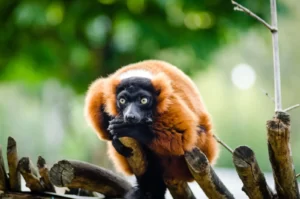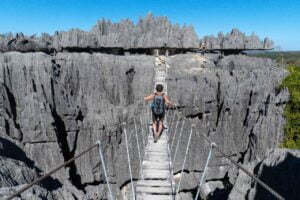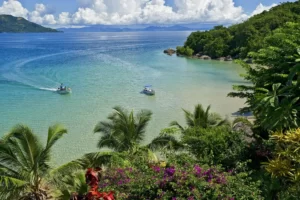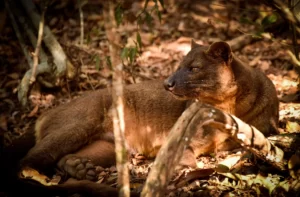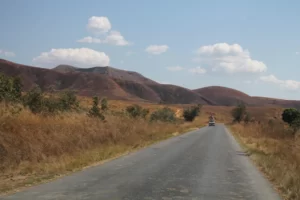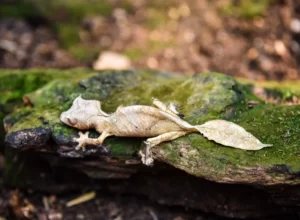Madagascar is a dream destination for wildlife enthusiasts. Its diverse ecosystems, ranging from rainforests to dry deciduous forests, are home to an array of unique species found nowhere else on Earth. If you’re an adventurer at heart, seeking an unforgettable experience with Madagascar’s wildlife, this guide will walk you through the marvels that await.
About Madagascar’s Wildlife
Madagascar’s wildlife is incredibly diverse and unique due to its long isolation from other land masses. Approximately 90% of its wildlife is endemic, meaning they are not found anywhere else in the world. This biodiversity hotspot boasts a variety of animals, plants, and ecosystems, making it a paradise for nature lovers and eco-tourists.
The Iconic Lemurs of Madagascar
The Diverse Species of Lemurs
Lemurs are perhaps the most iconic animals in Madagascar. These primates are found only on this island, with over 100 species ranging from the tiny mouse lemur to the large indri. Each species exhibits unique behaviors and adaptations, making them fascinating subjects for wildlife enthusiasts.
Where to Spot Lemurs
To see lemurs in their natural habitat, visit places like Andasibe-Mantadia National Park, Ranomafana National Park, and Anja Community Reserve. These parks offer guided tours that enhance your chances of spotting these incredible creatures.
Madagascar’s Unique Flora
The Majestic Baobabs
Baobabs, often referred to as the « upside-down trees, » are another highlight of Madagascar’s flora. These ancient trees can live for thousands of years and are most famously seen along the Avenue of the Baobabs near Morondava. Their unique shape and size create a striking landscape that is perfect for photography.
The Spiny Forests
Madagascar’s spiny forests, found in the southern part of the island, are home to a variety of unique plants and animals. The strange and beautiful flora, including the octopus tree and the Madagascar palm, contribute to the surreal atmosphere of this region.
Madagascar’s Reptiles and Amphibians
Chameleons Galore
Madagascar is home to nearly half of the world’s chameleon species. From the tiny Brookesia micra to the colorful Panther chameleon, these reptiles are a highlight for any visitor. You can find them in rainforests, dry forests, and even urban gardens.
Frogs of Madagascar
The island’s amphibian population is equally impressive, with a vast number of endemic species. The Mantella frogs, known for their bright colors, are among the most popular to observe. These frogs can be found in various habitats, including rainforests and swamps.
The Birds of Madagascar
Endemic Bird Species
Madagascar is a birdwatcher‘s paradise, with over 250 bird species, nearly 120 of which are endemic. Highlights include the Madagascar fish eagle, the Madagascar pygmy kingfisher, and the critically endangered Madagascar pochard.
Birdwatching Hotspots
Top birdwatching locations include the wetlands of Lake Alaotra, the dry forests of Kirindy, and the rainforests of Masoala National Park. These areas offer excellent opportunities to spot a variety of bird species in their natural habitats.
Marine life around Madagascar
The Coral Reefs
Madagascar’s coral reefs are teeming with life, offering spectacular snorkeling and diving opportunities. The reefs around Nosy Be and Île Sainte-Marie are particularly popular, where you can see a myriad of colorful fish, sea turtles, and sometimes even sharks.
Whale Watching
From June to September, the waters around Île Sainte-Marie become a hotspot for whale watching as humpback whales migrate to the warm waters to breed. This is an unforgettable experience, providing a close encounter with these magnificent giants of the sea.
Wildlife conservation efforts in Madagascar
Protecting Endangered Species
Madagascar’s unique wildlife faces numerous threats, including habitat destruction and climate change. Conservation efforts are crucial to protect the island’s biodiversity. Various organizations, such as the Madagascar Wildlife Conservation (MWC) and Durrell Wildlife Conservation Trust, are working tirelessly to safeguard these precious ecosystems.
Community-Based Conservation
Community involvement plays a vital role in conservation. Initiatives like community-managed reserves help to protect wildlife while providing sustainable livelihoods for local people. Visiting these reserves not only supports conservation efforts but also enriches your experience by engaging with the local culture.
Tips for Wildlife Viewing in Madagascar
Best Times to Visit
The best time to visit Madagascar for wildlife viewing is during the dry season, from April to November. This period offers the best weather conditions for trekking and increases your chances of seeing wildlife.
Madagascar Guided Tours
Hiring a local guide can significantly enhance your wildlife viewing experience. Guides have extensive knowledge of the local fauna and flora and can help you spot animals that you might otherwise miss.
Madagascar’s wildlife is unparalleled in its diversity and uniqueness. From the enchanting lemurs to the vibrant coral reefs, every corner of this island offers a new and exciting discovery. Whether you’re an avid birder, a reptile enthusiast, or simply a lover of nature, Madagascar promises an adventure that you will never forget.
Plan your visit to this incredible island, and immerse yourself in the wonders of Madagascar’s wildlife.

